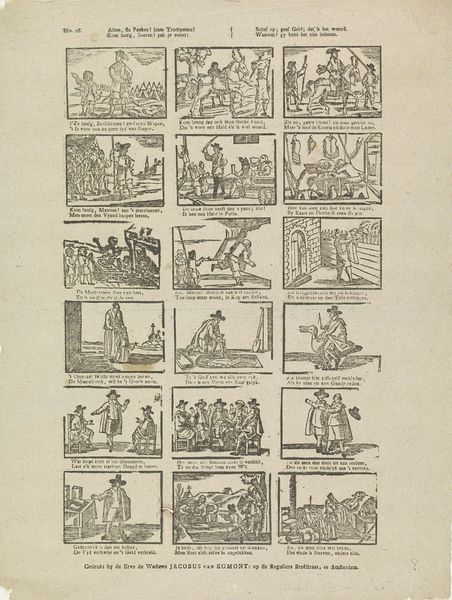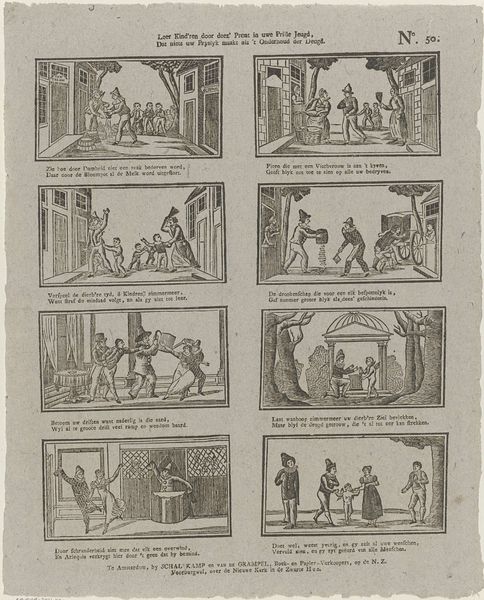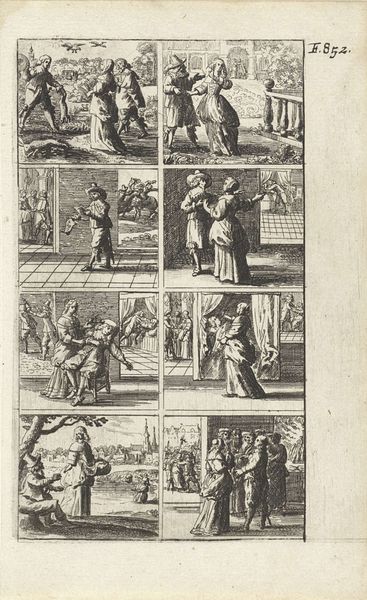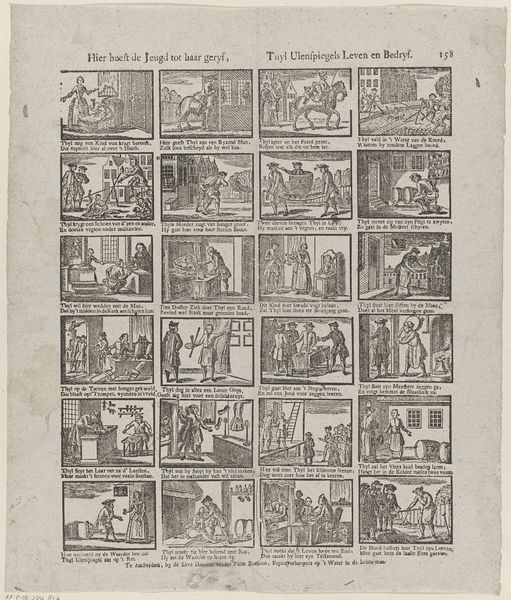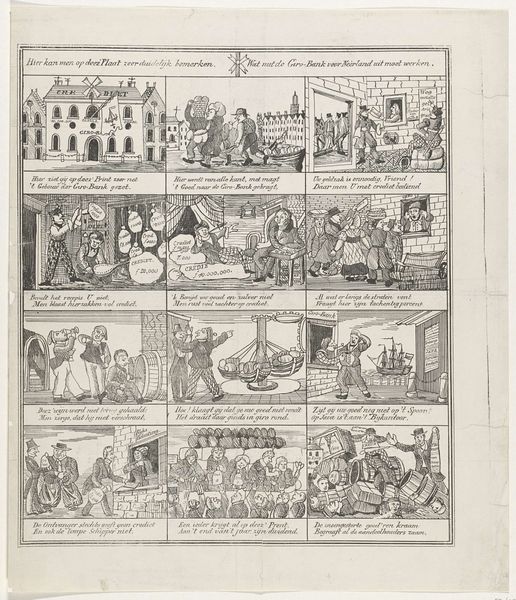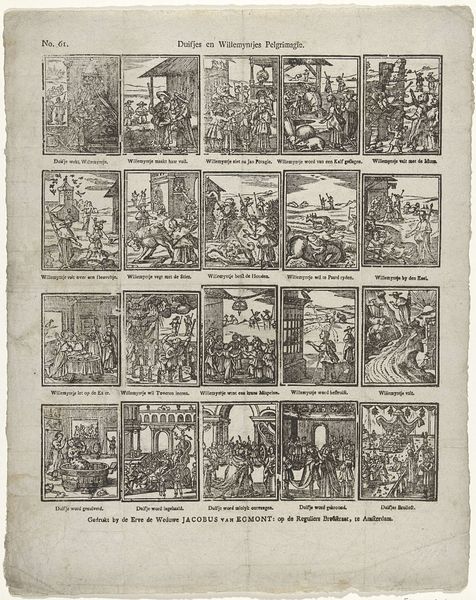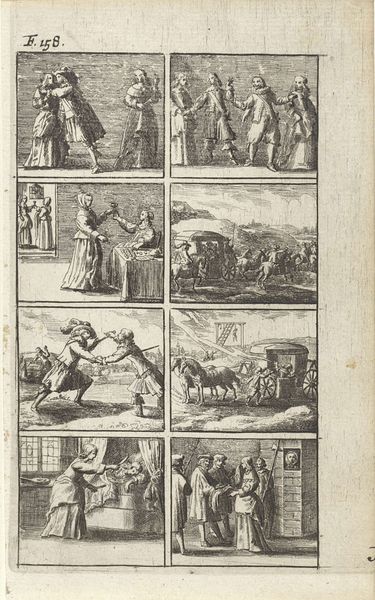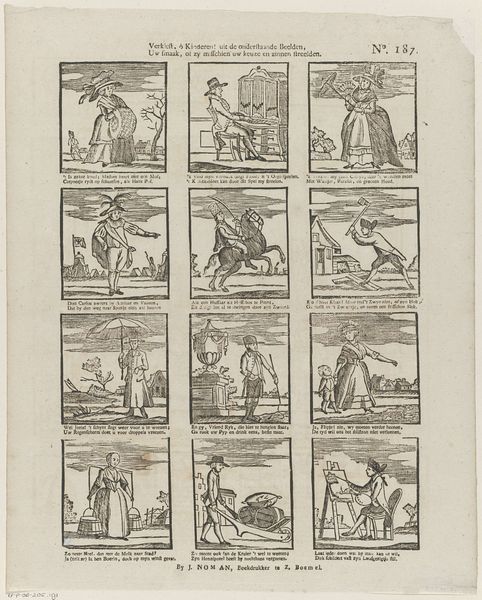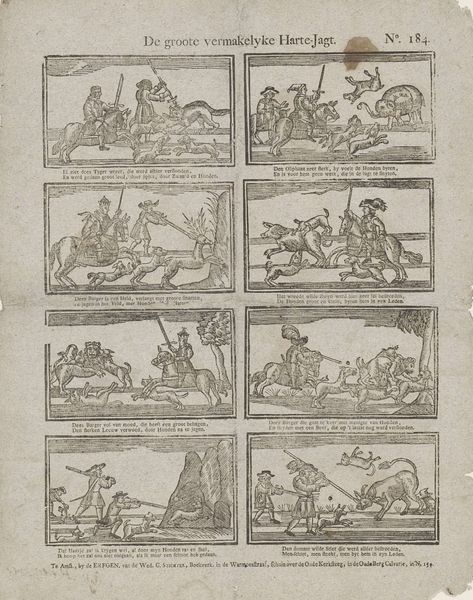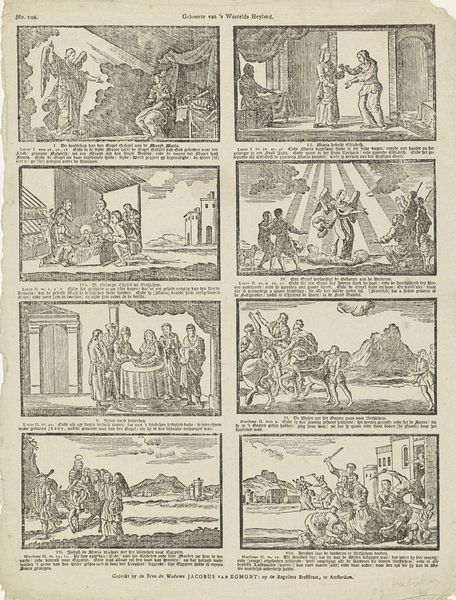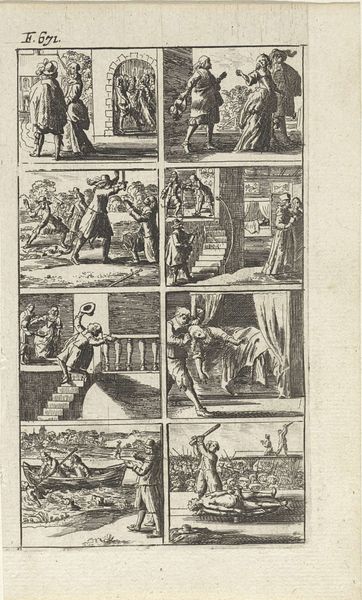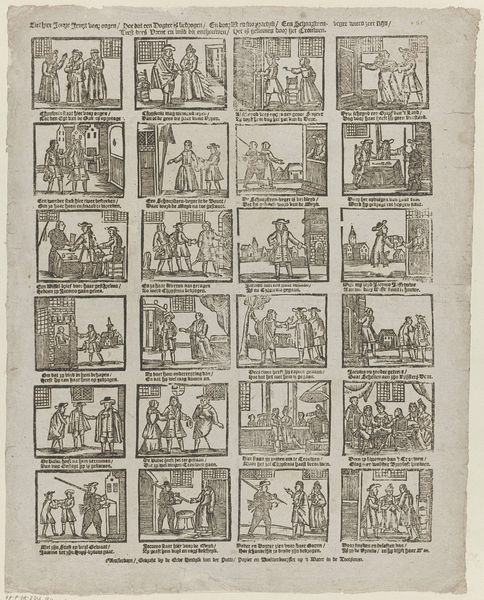
Dimensions: height 185 mm, width 140 mm
Copyright: Rijks Museum: Open Domain
Curator: This print, "Meiboom geplant door de Haagse Schutterij, 1763," which translates to "Maypole planted by the Hague Civic Guard, 1763," was created by Caspar Jacobsz. Philips. It’s currently housed right here in the Rijksmuseum. Editor: Wow, okay, so first impression? It feels like I’m looking at a visual storybook, almost like early comics, divided into these neat little boxes. Bit chaotic, but charming. Curator: It's an engraving, reflecting the baroque style popular at the time. Considering its social context, the image is rich with symbolism, providing insights into the social hierarchy and the roles of civic guards in 18th-century Hague. Notice how Philips uses narrative art conventions to highlight different aspects of this celebration. Editor: "Narrative art conventions," okay. But look at how tiny everyone looks compared to the buildings and ships! Makes you feel both grand and insignificant all at once, doesn’t it? Almost like a comment on power…or maybe I’m just projecting. Curator: I think your point about power is crucial. Consider the position of the Schutterij. Their public celebrations and traditions affirmed their importance within the civic structure, reinforcing existing social and political arrangements. Editor: True, it's like visual propaganda in a way! Did these guys REALLY think all this was justified at the time, or was there any, you know, dissent? Must've been a strange feeling to witness such elaborate, stage-managed festivities. It's all fascinating. Curator: Exactly. It’s these kinds of considerations that provide a more nuanced understanding of history. Looking through a lens of contemporary theory allows us to ask whose voices are amplified, and conversely, who is silenced in this image. Editor: All this civic virtue must’ve been annoying to anyone struggling to make rent. Still, I find that combination of public spectacle and private life intriguing. It makes you think of how much history has been conveniently edited. Curator: It is a valuable opportunity to examine the political and social functions of public celebrations and the role of the Civic Guard within that structure. Thanks for sharing your initial impressions and helping me put things in a much larger framework. Editor: No problem. Analyzing art with you always makes history a little less boring—okay, *way* less boring. Seeing that piece as historical documentation and then thinking how easily it would be possible to turn that event into a rock opera--that makes me curious and happy.
Comments
No comments
Be the first to comment and join the conversation on the ultimate creative platform.
